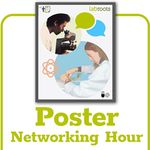A Novel Synthetic Self-amplifying RNA System and LNP delivery with Live Q&A
The approval of messenger RNA (mRNA) based COVID-19 vaccines marked a pivotal scientific milestone, establishing mRNA as an innovative drug modality with immense therapeutic potential. However, due to their short half-life, linear mRNAs require a considerable amount to produce enough protein to induce a therapeutic effect. Conversely, self-amplifying RNA (saRNA) encodes a viral replicase alongside the target protein, facilitating continuous production of the desired protein. This makes saRNA a more advanced RNA therapy modality, due to its lower dosage requirements and ability to produce long-lasting effects.
Here, we have developed a novel alpha-virus-based synthetic self-amplifying RNA (saRNA) system that demonstrates the higher eGFP expression in vitro cell-based assays compared to the Venezuelan equine encephalitis virus (VEEV) vector. Furthermore, we tested saRNA with various base modifications, including Pseudouridine, N1-Methyl-Pseudouridine, 5-Methoxyuridine, and 5-Methylcytidine. Among them, saRNA with 5-Methylcytidine showed the highest Luciferase expression in HEK293T cells after 72 hours of transfection. Additionally, when HEK293T cells were transfected with 10 ng, 100 ng of saRNA, and 100 ng of linear mRNA, the 10 ng saRNA treatment achieved the highest eGFP expression, while maintaining comparable immunogenicity as the linear mRNA, as evidenced by measurements of IFN-α and other immune markers. Furthermore, we encapsulated three synthetic saRNA constructs encoding luciferase, along with linear Fluc-mRNA, within lipid nanoparticles (LNP) and administered them intravenously to mice. The in vivo result revealed that luciferase could be detected up to 3 weeks post-administration for Fluc-saRNA, whereas it was detectable for only 1 week in the case of linear Fluc-mRNA. Notably, the biodistribution patterns of saRNA varied distinctly from those of linear mRNA: saRNA-1 exhibited high accumulation in the spleen (29%) and heart (22%); saRNA-3 predominantly targeted the kidney (53%) and lymph node (19%); and saRNA-4 demonstrated the highest accumulation in the spleen (73%) and kidney (9%). In summary, Genscript has established a comprehensive one-stop solution for self-amplifying RNA, including sequence design, saRNA synthesis & purification, and LNP encapsulation.
Learning Objectives:
1. Learn the novel synthetic saRNA vector and its advantage in vaccine development.
2. How to optimize the design for saRNA vector.
3. Organ targeted delivery using the saRNA-LNP.




